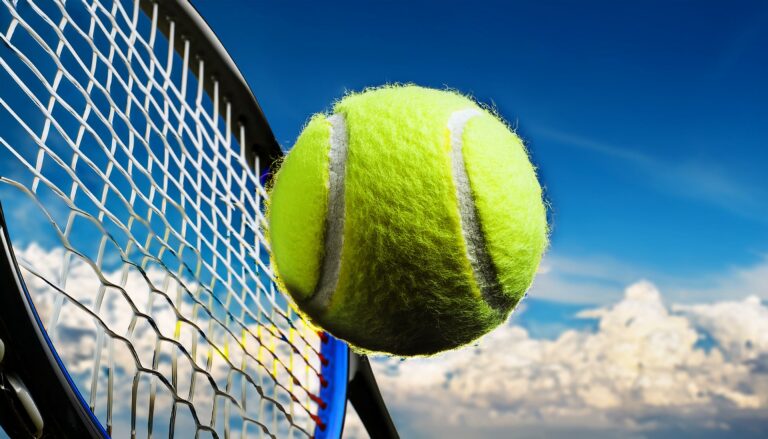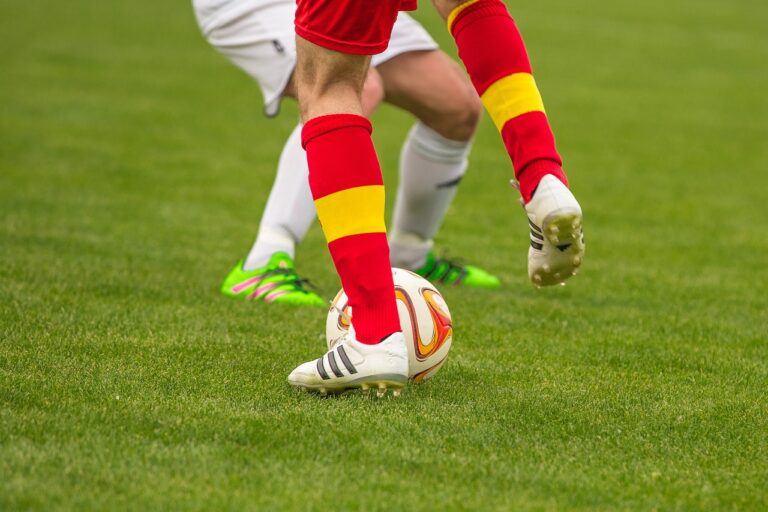The Science of Fielding: Strategies and Drills
11xPlay, Allpaanel: Solid fielding is an essential aspect of any successful team’s defense. It involves a combination of skill, focus, and technique to prevent runs and create outs. To excel in the field, players must master various components that contribute to effective fielding techniques.
One key component is proper positioning. Each player on the field needs to understand their role and where they should be standing based on the situation. By being in the right place at the right time, fielders can increase their chances of making plays and minimizing the opposition’s scoring opportunities. Additionally, quick reflexes and good hand-eye coordination are vital for fielders to react swiftly to balls hit their way. By honing these skills through practice and drills, players can elevate their fielding proficiency and make impactful contributions to their team’s success.
Importance of Footwork in Fielding
Effective fielding is a crucial aspect of any successful softball or baseball team, and one key component that significantly impacts a player’s fielding ability is footwork. The way a player positions their feet before, during, and after fielding a ball can greatly influence the outcome of the play. Proper footwork allows fielders to react quickly, move efficiently, and maintain balance, ultimately leading to more successful plays on the field.
By emphasizing the importance of footwork in fielding, coaches and players can work together to develop fundamental skills that are essential for defensive success. Good footwork not only helps fielders reach for balls effectively but also allows them to position themselves in the most advantageous way to make the play. It is the foundation upon which fielding techniques are built, and mastering footwork can significantly elevate a player’s overall fielding performance.
Understanding the Role of Communication in Fielding
Effective communication plays a pivotal role in fielding success, allowing teammates to coordinate seamlessly and react swiftly to different game situations. Clear and concise communication helps fielders avoid collisions and make split-second decisions with confidence. By verbally calling out responsibilities and providing constant updates on the game’s progression, fielders can ensure optimal defensive alignment and cover areas efficiently.
In addition to verbal communication, fielders can also enhance their coordination by utilizing non-verbal cues such as hand signals and eye contact. These subtle forms of communication can convey crucial information quickly, especially in noisy and fast-paced game environments. By developing a shared understanding of these non-verbal signals, fielders can react instinctively and work harmoniously to secure outs and prevent scoring opportunities.
Enhancing Reaction Time Through Drills
Reaction time is a crucial aspect of successful fielding, requiring players to quickly assess the situation and react accordingly. One effective drill to enhance reaction time is the rapid-fire fielding drill, where players field consecutive balls rapidly to simulate game-like scenarios. This drill helps players improve their reflexes and decision-making skills under pressure.
Another useful drill is the mirror drill, where players partner up and mirror each other’s movements to improve coordination and reaction time. By mimicking each other’s actions, players can sharpen their ability to predict and react to the ball’s trajectory. Incorporating these reaction-enhancing drills into regular practice sessions can significantly improve fielders’ performance during crucial moments in games.
Mastering the Art of Positioning in the Field
To excel in the art of fielding, one must understand the importance of proper positioning on the field. The right position can make all the difference in being able to react swiftly to a hit ball. Fielders need to anticipate the play and position themselves according to the batter’s tendencies, the pitcher’s strengths, and the game situation. By mastering the art of positioning, fielders can increase their chances of making successful plays and limiting the opposition’s scoring opportunities.
Proper positioning not only allows fielders to cover more ground effectively but also enables them to make routine plays with ease. Being in the right place at the right time can result in crucial outs and prevent extra bases. Fielders should constantly adjust their positioning based on factors such as the count, the hitter’s tendencies, and the defensive alignment. By mastering this aspect of fielding, players can significantly contribute to their team’s success on the field.
Utilizing Proper Body Mechanics for Optimal Fielding
To excel in the art of fielding, mastering proper body mechanics is essential. When fielding a ball, it is crucial to maintain a low and balanced posture. This helps in staying agile and poised to react quickly to the direction of the ball. Additionally, keeping the knees slightly bent allows for better mobility and quick transitions when moving to catch or field the ball. By utilizing the proper body mechanics, fielders can maximize their agility and efficiency in the field.
Furthermore, keeping the arms relaxed and in front of the body enables fielders to react swiftly to any sudden changes in the ball’s trajectory. Fielders should focus on using their entire body to position themselves correctly, rather than relying solely on their hands. This approach helps in ensuring a stable foundation and allows for a more controlled and accurate fielding technique. By integrating proper body mechanics into their fielding skills, players can enhance their overall performance and contribute significantly to their team’s defensive efforts.
The Role of Visualization in Improving Fielding Performance
Visualization plays a crucial role in improving fielding performance by allowing players to mentally rehearse their movements before executing them on the field. By visualizing the specific actions involved in fielding, such as tracking the ball, getting into position, and making the throw, players can enhance their muscle memory and reaction time. This mental practice helps players anticipate different scenarios that may arise during a game, enabling them to react swiftly and effectively.
Furthermore, visualization can also help players stay focused and confident during high-pressure situations on the field. By picturing themselves successfully making a difficult catch or executing a flawless throw, players can boost their self-belief and calm their nerves. This positive mindset can greatly impact their performance, allowing them to perform at their best when it matters most.
Incorporating Agility Training for Fielding Success
Agility training plays a vital role in enhancing fielding performance by improving an athlete’s ability to swiftly change directions and react to varying situations on the field. Incorporating drills that focus on agility can help fielders develop the necessary quickness and explosiveness needed to cover ground effectively and make crucial plays. By honing their agility through targeted exercises, fielders can increase their overall speed and responsiveness, ultimately leading to more successful outcomes during games.
In addition to physical benefits, agility training can also sharpen a fielder’s mental acuity by enhancing their decision-making skills and spatial awareness. By practicing agility drills that simulate game-like scenarios and require quick thinking, fielders can train their minds to process information rapidly and make split-second judgments. This mental sharpness is essential in fielding situations where players must react quickly to the ball’s trajectory and make strategic movements to secure outs and prevent runs from scoring.
Strategies for Reading the Ball Off the Bat
Effective fielding hinges greatly on the ability to accurately read the ball as it leaves the bat. This skill requires a combination of keen observation, quick reflexes, and a solid understanding of the game. To enhance your ability to read the ball off the bat, practice tracking the ball from the moment it is hit, focusing not just on its trajectory but also on any subtle cues from the batter’s movements. Anticipate where the ball will land based on factors such as the angle of the bat and the speed of the swing.
Furthermore, positioning yourself correctly on the field can significantly aid in reading the ball off the bat. By understanding the tendencies of different batters and being aware of the field conditions, you can preemptively adjust your position to increase the chances of successfully fielding the ball. Remember, communication with your teammates is key in ensuring everyone is in the right place to cover all possible angles from which the ball may come.
Implementing Team Fielding Drills for Cohesion and Success
Team fielding drills play a crucial role in fostering cohesion and success on the field. By engaging in structured practice sessions that focus on teamwork and coordination, players can develop a better understanding of their roles and responsibilities in different fielding situations. These drills not only improve individual skills but also emphasize the importance of communication and collective effort in achieving fielding excellence.
Incorporating various team fielding drills, such as relay races, situational fielding scenarios, and live game simulations, can greatly enhance the team’s overall performance. These exercises not only sharpen fielding techniques but also instill a sense of unity and camaraderie among team members. Through consistent practice and collaboration, players can build trust and work in harmony to achieve collective success in the field.
What are the key components of effective fielding techniques?
The key components of effective fielding techniques include proper footwork, communication, reaction time, positioning, body mechanics, visualization, agility training, and the ability to read the ball off the bat.
Why is footwork important in fielding?
Footwork is important in fielding as it helps fielders get into position quickly, maintain balance, and make accurate throws.
How does communication play a role in successful fielding?
Communication is essential in fielding as it helps fielders coordinate with each other, avoid collisions, and make quick decisions on who will field the ball.
How can drills help enhance reaction time in fielding?
Drills can help enhance reaction time in fielding by simulating game-like situations, improving hand-eye coordination, and training fielders to react quickly to the ball.
Why is positioning important in the field?
Positioning is important in the field as it allows fielders to anticipate where the ball will be hit and be in the best position to make a play.
How can proper body mechanics improve fielding performance?
Proper body mechanics can improve fielding performance by helping fielders move efficiently, make accurate throws, and reduce the risk of injury.
How can visualization help in improving fielding performance?
Visualization can help in improving fielding performance by mentally rehearsing fielding scenarios, boosting confidence, and enhancing focus during games.
What is agility training and how can it benefit fielding success?
Agility training involves exercises that improve speed, agility, and quickness, which can benefit fielding success by helping fielders move quickly and efficiently on the field.
What strategies can be used to read the ball off the bat effectively?
Strategies for reading the ball off the bat effectively include tracking the ball from the moment it is hit, anticipating its trajectory, and adjusting position accordingly.
How can implementing team fielding drills improve cohesion and success?
Implementing team fielding drills can improve cohesion and success by fostering teamwork, enhancing communication, building trust among teammates, and refining fielding skills through practice.







